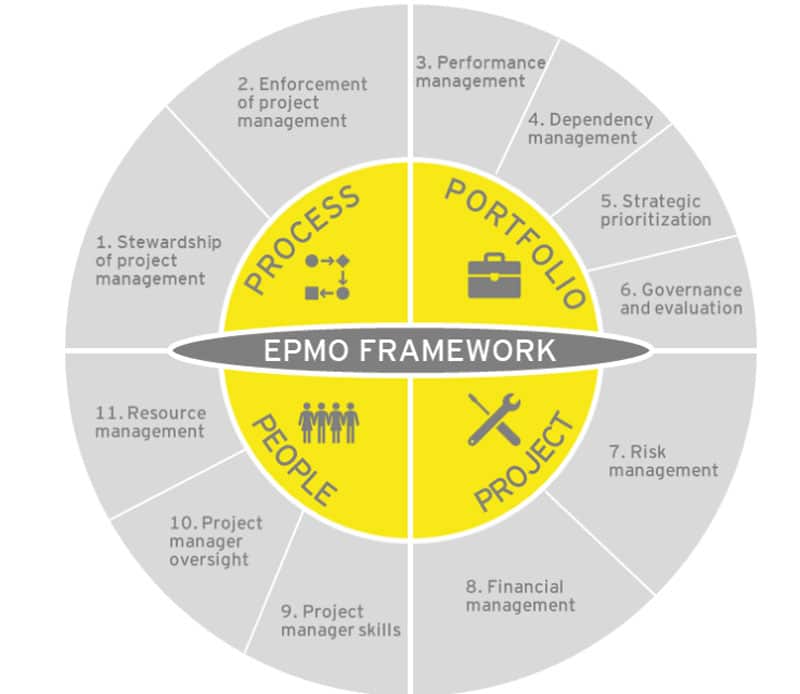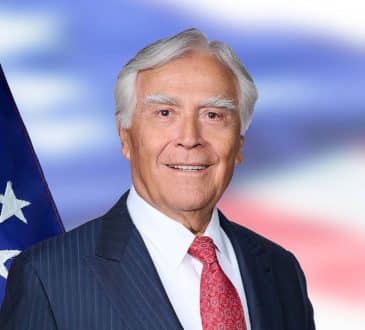From Chaos to Clarity: The Path to Strategic Execution Success

Why strategic execution is the ultimate game-changer.
James Clear, renowned thought leader and author of Atomic Habits, once said, “You do not rise to the level of your goals. You fall to the level of your systems.” It’s a powerful reminder that ambition alone isn’t enough. Success depends on the inside-out structures and processes to turn vision into reality. Identifying goals is the first step; without the right business systems to support execution, even the most well-crafted strategies remain just aspirations. As former Starbucks CEO Howard Schultz said, “Strategy without execution is hallucination.” In business, this couldn’t be truer: an organization’s strategic potential is only as strong as its ability to execute.
Change isn’t just coming—it’s already here. Business models are shifting, stakeholder expectations are evolving, regulatory landscapes are tightening, and technology is reshaping entire industries. The difference between those that thrive and those that survive is the ability to execute. Organizations with a strong strategy seamlessly integrated into execution will be best positioned to drive results.
Recent global events—including the wars in the Middle East and Ukraine, the COVID-19 pandemic, the race for AI dominance, and shifting trade policies—have underscored the critical need for effective execution. The election of President Trump, and resulting tariffs on Canada, Mexico, and China have exposed the fragility of global supply chains, while the pandemic forced businesses to rethink their operations. In the timely strategy book, Outside In, Inside Out, Lance Mortlock emphasizes that a well-defined strategy serves as a company’s “north star.” However, Mortlock explains that strategy alone isn’t enough—the true challenge lies in closing the gap between strategy and execution.
The numbers are telling: according to Harvard Business Review, 67% of well-formulated strategies fail due to poor execution of priorities. In other words, most companies don’t struggle with setting goals—they struggle with making them happen. Take Zoom, for example. When the pandemic reshaped how we work and communicate, the company didn’t just have the right product; it had the proper execution. In just two quarters of 2020, Zoom’s revenue skyrocketed by 169%, then 355%. While others hesitated, Zoom adapted, scaled, and delivered.
Execution is what separates success from stagnation. And in today’s fast-moving business environment, it’s not the most prominent players who win—it’s the fastest.
Turning strategy into seamless execution.
An Enterprise Project Management Office (EPMO) from the inside out is the backbone of strategic execution, ensuring that an organization’s initiatives are aligned, well-prioritized, and effectively managed. While traditional project management offices (PMOs) are often function-specific and exist in multiples within an organization, an EPMO operates at an enterprise-wide level, offering unique benefits that drive efficiency, clarity, and impact on execution.
- Prioritization: Focusing on what matters most – In a research article by Paul Leinwand and Cesare Mainardi, 64% of executives reported they have too many conflicting priorities. One of the EPMO’s greatest strengths is its ability to prioritize projects based on enterprise-wide objectives. By taking a holistic view of the project portfolio, an EPMO ensures that the initiatives delivering the highest value rise to the top. This approach optimizes resource allocation, preventing bottlenecks and ensuring that time, talent, and treasury are directed toward initiatives with the most significant strategic impact. As the saying goes, “It’s better to do the right projects right than to execute the wrong projects right or even worse wrong.”
- Transparency: A clear line of sight into execution – In a recent Institute of Project Management report, author Nadege Minois explains how prioritizing open and transparent communication fosters an environment of trust, collaboration, and innovation, allowing teams to navigate challenges and seize opportunities with confidence. EPMOs provide a single source of truth for project progress, offering unparalleled clarity into key initiatives. Regular reporting on milestones, performance metrics, and roadblocks helps manage expectations and build confidence. By establishing a structured framework for transparency, EPMOs alleviate concerns about project delays and ensure that decision-makers have real-time insights to course-correct when necessary. In today’s fast-paced business environment, this level of clarity isn’t just beneficial—it’s expected.
- Structure: Governance that drives consistency – A governance structure is critical in industries with complex, resource-intensive projects. An EPMO enforces best practices across all projects, fostering consistency in execution, accountability in decision-making, and continuous improvement in methodologies. An EPMO ensures that initiatives stay on track, within budget, and aligned with business goals by equipping project managers with the tools and frameworks they need.
- Standardization: Creating a unified approach – One key challenge organizations face is inconsistency in project management approaches. An EPMO eliminates this issue by standardizing methodologies, processes, and tools across all initiatives. This uniformity enhances efficiency, reduces costly mistakes, and ensures that every project supports the broader business strategy. An EPMO enables organizations to scale their project management capabilities while maintaining agility in an ever-evolving landscape by streamlining how projects are initiated, executed, and measured.
- Risk management: Mitigating uncertainty, maximizing success – According to the Project Management Academy, an EPMO plays a vital role in proactive risk management. From identifying potential pitfalls to ensuring optimal resource deployment, an EPMO helps organizations confidently navigate risk. Common project derailers—such as lack of focus, resource shortages, miscommunication, and resistance to change—are mitigated through robust risk assessment frameworks and clear communication channels.
In an era where organizations must continuously adapt to shifting outside in market dynamics, an EPMO is more than just a governance function—it’s a strategic enabler. By driving prioritization, transparency, structure, standardization, and risk management, an EPMO transforms project execution from a fragmented process into a cohesive strategy for long-term success.
Tailoring your EPMO for maximum impact.
When determining whether an EPMO is the right fit for an organization, it’s essential to first define its role. Based on experience and proven success, we’ve identified three primary modes of EPMO deployment:
- Drive: In this mode, the EPMO takes full ownership of executing enterprise strategy, managing work efforts, and delivering results. With direct control over projects and resources—such as personnel, tools, and governance authority—the EPMO drives project execution.
- Orchestrate: The EPMO is a hands-on facilitator, guiding project management design while supporting executives and teams in day-to-day decision-making. This role emphasizes questioning, observing, and ensuring seamless communication and coordination between groups while maintaining oversight of the reporting process.
- Advise: As a strategic consultant, the EPMO offers guidance on best practices and process improvements but remains removed from daily decision-making and execution. It provides input as needed, helping stakeholders stay aligned without directly managing the work.
The role of an EPMO isn’t fixed—it operates on a fluid spectrum, continuously evolving to meet the shifting demands of the organization. Its success hinges on balancing internal priorities and external market pressures, ensuring it delivers maximum impact.
Take Verizon, for example. As the telecom giant’s strategies evolved, so has the emphasis of its EPMOs. Today, the company is laser-focused on reducing project cycle times, a goal made possible through standardized project management processes. The results are striking—when the EPMO was first established, launching a product took anywhere from 18 to 24 months. Now, that timeline has been cut to just 10.3 months, proving the power of adaptability and execution process efficiency.
EPMOs typically operate as a blend of structure and flexibility, adjusting to meet the needs of their organizations. But there’s no universal formula for success. In fact, the Project Management Institute emphasizes that the more an approach is tailored, the greater the likelihood of project success. The key lies in identifying and customizing the right model to align with the organization’s unique challenges and objectives.

Getting the scope of an EPMO right through the process, portfolio, project & people.
Although each organization’s EPMO may have a different scope to best suit their needs, the following standardized framework should help frame and challenge one’s thinking around the scope. Centred on project management, this inside-out framework can help an organization identify the roles, responsibilities, activities, and oversight that should be considered, informing opportunities for the organization to mature.
This framework sees the key responsibilities of an EPMO split across four key categories: Process, Portfolio, Project, and People. Each of these categories contains further sub-categories, in which activities for completion are defined to form the basis for what the function should be doing. Per the distinction of modes discussed earlier, the extent to which the function completes these various activities can vary. In practice, EPMOs will focus on specific areas of responsibility more than others, depending on what the organization needs most from the function.
Next steps to generating strategic success.
Ambition without execution is just wishful thinking. As businesses face evolving challenges, the EPMO is a strategic asset, transforming plans into successful execution outcomes and helping organizations find clarity in the sea of chaos. The ability of EPMOs to ensure strategic alignment and flawless execution makes this approach vital to unearthing execution success in today’s fast-paced market.
——–
Written by Dr. Lance Mortlock, Author of Outside In, Inside Out – Unleashing the Power of Business Strategy in Times of Market, Chris Palmer, and Natalie McVicar.
Have you read?
Most Innovative Countries in the World.
Countries by Average Wealth per Person.
Countries with the Highest Age Dependency Ratio.
Best Universities In The World.
Bring the best of the CEOWORLD magazine's global journalism to audiences in the United States and around the world. - Add CEOWORLD magazine to your Google News feed.
Follow CEOWORLD magazine headlines on: Google News, LinkedIn, Twitter, and Facebook.
Copyright 2025 The CEOWORLD magazine. All rights reserved. This material (and any extract from it) must not be copied, redistributed or placed on any website, without CEOWORLD magazine' prior written consent. For media queries, please contact: info@ceoworld.biz








